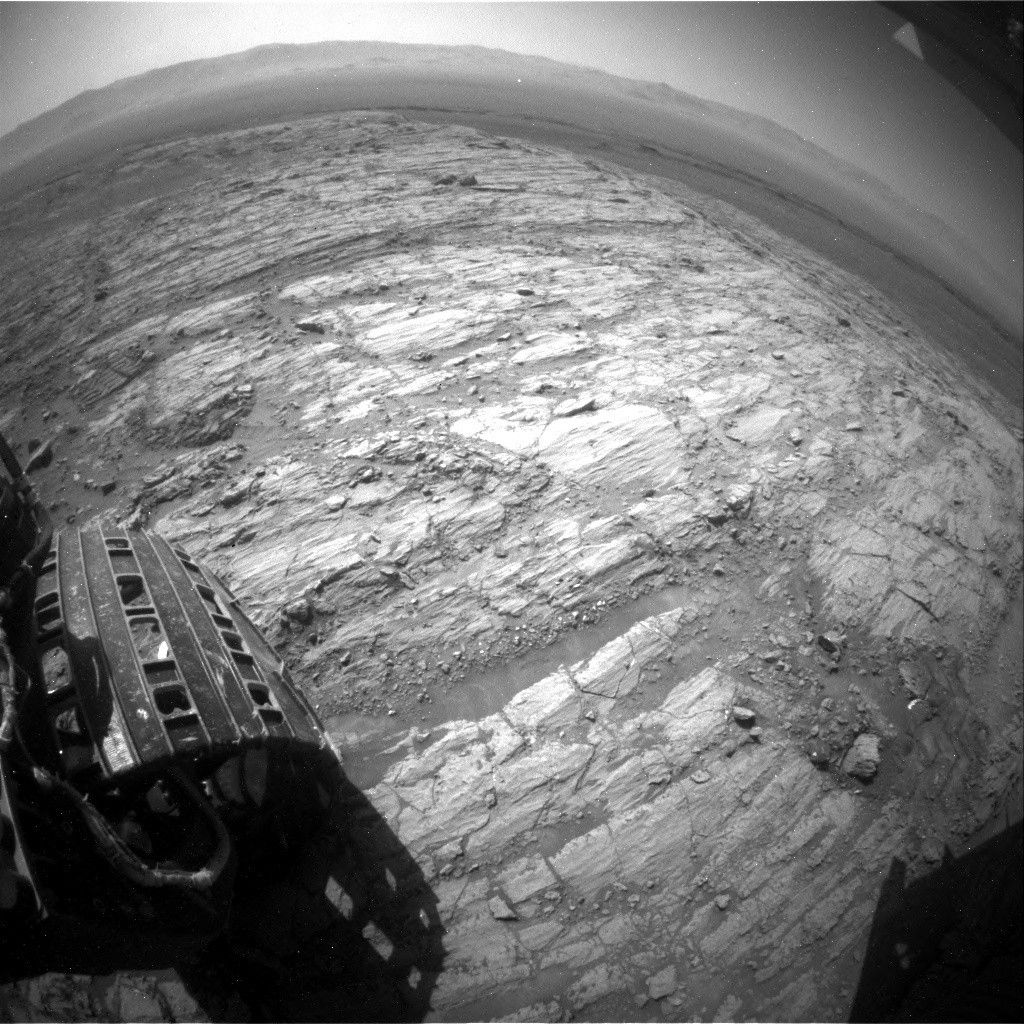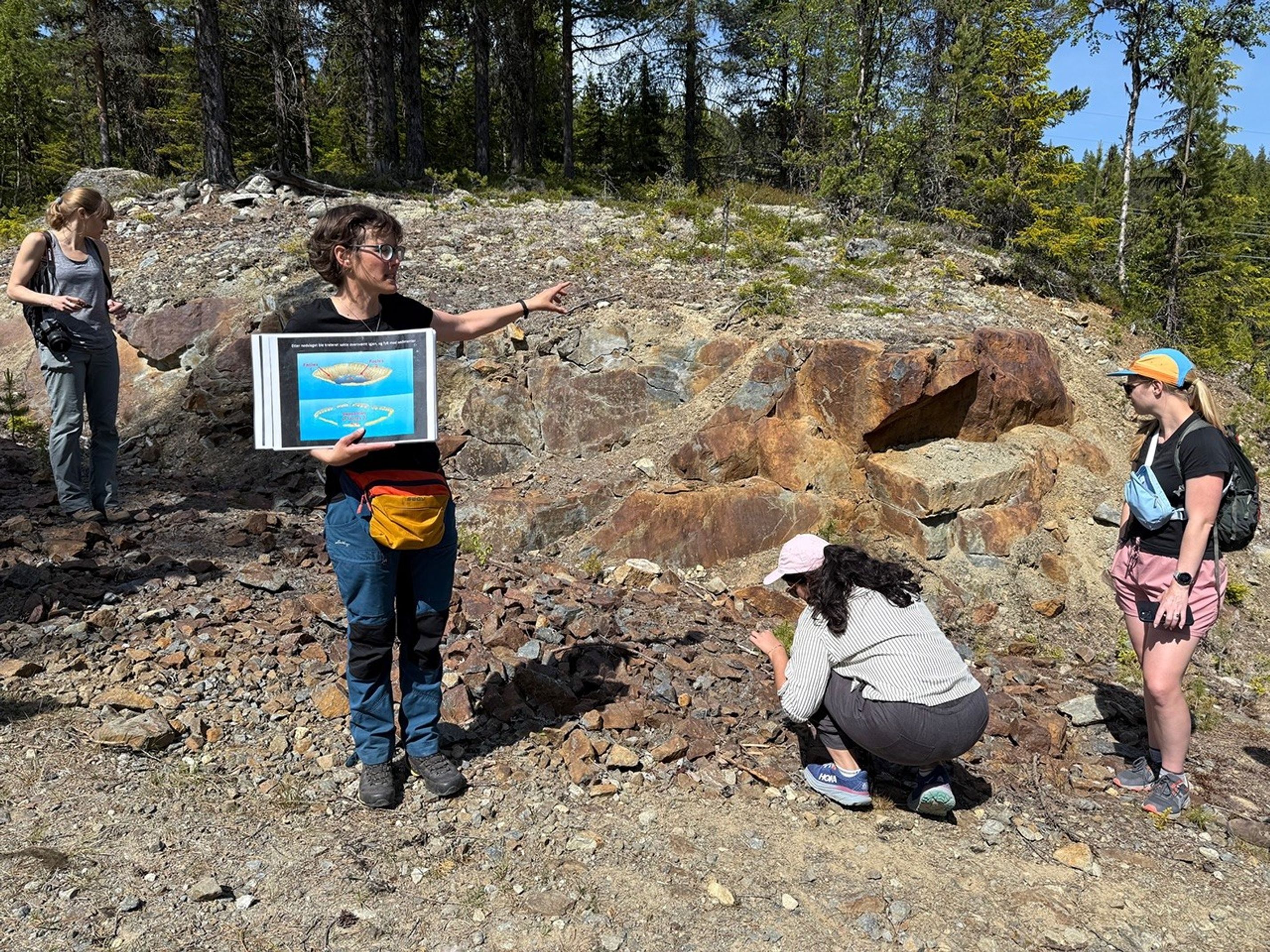There's a line in the halftime scene of the movie "Any Given Sunday": "life's this game of inches…the margin for error is so small." The same is true on Mars. On Sol 1843, Curiosity started her drive with a turn to the right.
There's a line in the halftime scene of the movie "Any Given Sunday": "life's this game of inches…the margin for error is so small." The same is true on Mars. On Sol 1843, Curiosity started her drive with a turn to the right. Her right rear wheel encountered a small ridge (part of which is visible to the right of the wheel in the above image), a few inches of rock offering just enough resistance to cause Curiosity to stop the drive and wait for further instructions. The unexpected obstacle gave Curiosity a fourth planning sol at this location which the team used to add to their collection of bedrock measurements from the workspace. The "Bulawayo" target offered one of the least-dusty surfaces in the workspace, a gray, finely-layered and vertical rock face that made a tempting target for ChemCam. ChemCam also shot "Bushveld," a wind-sculpted expanse of bedrock dotted with small, resistant features. Not far from Bushveld, and adjacent to Sol 1838's "Duitschland" target, both MAHLI and APXS studied bedrock target "Stormberg." Having APXS analyses from both Stormberg and Duitschland in close proximity provides the opportunity to tease out small chemical differences between the targets.
After freeing herself from the obstacle by the right rear wheel, Curiosity will drive ~20 m farther up the "Vera Rubin Ridge." Post-drive, she'll acquire an automatically-targeted ChemCam analysis and a third CheMin integration of the "Ogunquit Beach" sand sample. Each CheMin integration brings the mineralogy of the Ogunquit Beach sample into sharper and sharper focus. The majority of the environmental monitoring observations also happen post-drive, including acquisition of mid-afternoon dust devil and cloud movies and a DAN active measurement.
Here's hoping the inches break our way this weekend!
Written by Michelle Minitti, Planetary Geologist at Framework































